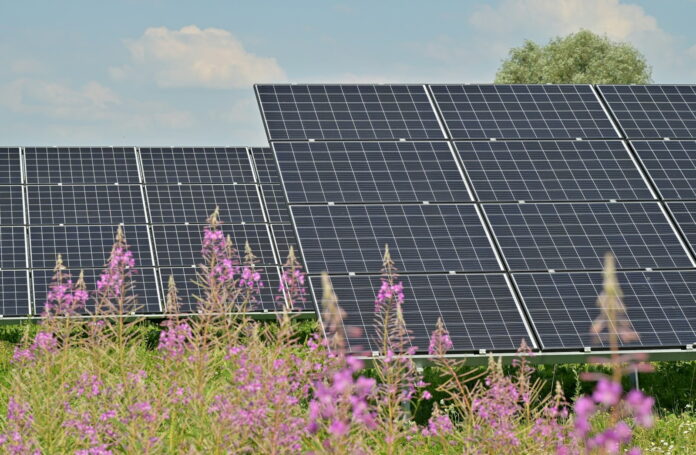Humanity has long been captivated by the boundless energy of the sun and the relentless power of the wind. As we face the pressing need to transition from fossil fuels to more sustainable sources, the quest to harness these natural forces has intensified. Solar and wind energy, once seen as alternative fringe options, are now at the forefront of our renewable energy arsenal. Their transformation into sustainable electricity is not just a technological revolution but a beacon of hope for a cleaner, greener future.
Harnessing Solar Energy: A Bright Future
The sun’s rays provide an abundant source of energy that is both inexhaustible and clean. Solar power technology has made leaps and bounds in recent years, transitioning from expensive and inefficient panels to highly sophisticated photovoltaic systems. These systems convert sunlight directly into electricity using semiconductor materials that exhibit the photovoltaic effect. Advances in material science have led to the development of thinner, more flexible solar panels that can be integrated into a variety of surfaces, thus expanding the potential of solar installations.
Efficiency has been a key focus in solar technology, with researchers continually finding ways to increase the amount of electricity generated from a given amount of sunlight. Emerging technologies, such as perovskite solar cells, promise even greater efficiencies, potentially revolutionizing the solar industry. Moreover, the cost of solar power has plummeted, making it increasingly competitive with traditional energy sources. This cost reduction has been driven by economies of scale, improvements in manufacturing techniques, and governmental support through subsidies and incentives.
The future of solar energy is not limited to just electricity production; it also encompasses the development of solar heating and cooling systems, portable solar devices, and solar-powered transportation. The versatility of solar technology means it can be deployed almost anywhere, from vast solar farms to residential rooftops, and even in remote locations where the grid does not reach, providing a bright future for energy independence and sustainability.
Wind Power: The Breath of Innovation
Wind power harnesses the kinetic energy of the wind to generate electricity, and it has become one of the fastest-growing sources of renewable energy in the world. Modern wind turbines are feats of engineering that can tower high above the ground or sea, capturing the more consistent and powerful winds available at higher altitudes. The design of wind turbines has evolved significantly, with larger blades and improved materials increasing both their efficiency and the amount of electricity they can produce.
Offshore wind farms are a particularly promising development, as they not only capitalize on the stronger and steadier winds found over the oceans but also avoid some of the land use conflicts associated with onshore wind installations. The floating wind turbine technology is opening up new areas for potential wind power generation, as they can be situated in deeper waters where fixed foundations are not feasible. This expansion of viable locations for wind farms is crucial for countries with limited available land or challenging terrains.
One of the challenges facing wind power is its variability; wind is not constant, and therefore, neither is the energy it produces. However, innovations in energy storage, such as batteries and other energy storage systems, are helping to smooth out this intermittency, ensuring a reliable supply of electricity. Additionally, predictive analytics and advanced weather forecasting are allowing grid operators to better anticipate wind patterns and integrate wind energy more effectively into the energy mix.
Integrating Renewables: Smart Grids Evolve
The traditional electric grid was designed for a one-way flow of electricity from centralized power plants to consumers. However, the rise of renewable energy sources like solar and wind, which can be more decentralized and variable, necessitates a more sophisticated grid system. Smart grids, enhanced with digital communication technology, provide a solution by managing the complex flows of electricity from multiple sources in an efficient and reliable manner.
Smart grids incorporate a variety of technologies, such as smart meters, sensors, and advanced control systems, to monitor and manage the energy flow throughout the network. They enable the integration of distributed energy resources (DERs), including rooftop solar panels and small-scale wind turbines, by allowing two-way communication between the energy provider and consumers. This bi-directional flow not only supports the stability of the grid but also empowers consumers to become active participants in energy production and management.
One of the key benefits of smart grids is their ability to balance supply and demand in real-time, which is vital for accommodating the intermittent nature of solar and wind energy. Demand response programs can incentivize consumers to reduce or shift their electricity usage during peak times, helping to stabilize the grid. Additionally, smart grids can facilitate the wider use of electric vehicles (EVs), supporting the charging infrastructure and even using EV batteries as temporary energy storage to supply the grid when needed.
The transformation of sun and wind into sustainable electricity is a testament to human ingenuity and our commitment to a sustainable future. As we continue to harness the potential of solar and wind energy, the evolution of smart grids ensures that these renewable resources are integrated seamlessly into our energy infrastructure. The synergy between technological advancement and innovative grid management is paving the way for a more resilient, efficient, and clean energy system. The journey towards harvesting nature’s power is not without its challenges, but the progress made thus far promises a future where sustainable electricity is not just a vision, but a reality.
